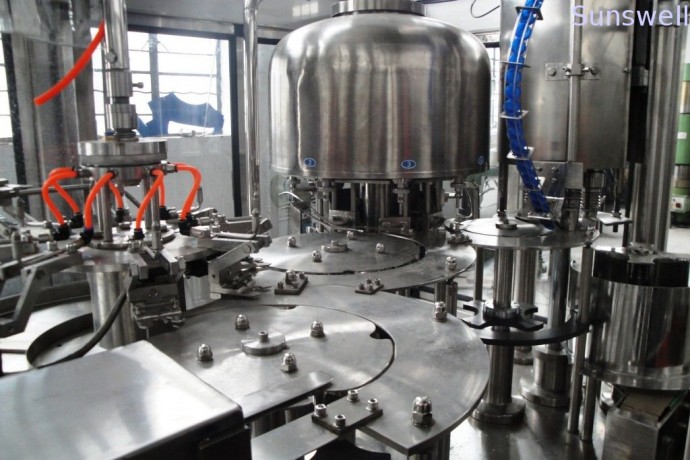If you are looking to start production of a liquid product, and need to fill bottles or containers at a much faster speed than you can get it done manually, chances are you are planning to invest in a filling machine. Filling machines are used by all kinds of companies, from beverage giants like Coca Cola through to small scale microbreweries, and companies who produce all kinds of chemicals. However, because of the different needs of different users, there is a lot of diversity in the production rate of different machines, the kind of fluids they can handle, and their cost.

You will need to make a number of decisions to spec out the machine that is right for you, however the most basic one, and a good starting point, is to decide whether you need an automatic, semi-automatic or even a manual filler.
What Are The Differences?
A manual filling machine is the most basic and cheapest kind. It requires an operator, and simply mechanizes the dispensation of the fluid into the container. It will offer you a faster rate of production than doing the job completely by hand, and can be suitable if you are a small scale producer who doesn’t need to deliver a large number of bottles per day.
A semi-automatic filler can give you a much faster production rate and therefore a larger yield of bottles. It still requires an operator, though doesn’t need the same level of human control as a manual filler, as you might expect. This kind of unit tends to be the most popular choice with small to medium sized producers who want the right balance between production rate and cost.
Automatic fillers are incredibly fast, and can give you really rapid production rates of hundreds of bottles per minute. As you might expect, these are what companies who need very large yields require, and because they are a lot more technically complex, they are considerably more expensive than semi-automatic machines.
Making Your Choice
The most important consideration in choosing which type of machine you need is how many bottles you need to produce. Machines are rated in terms of their rate of bottles per minute at their full production speed, referred to as ‘BPM’ by filler manufacturers. Of course, you may at this point only know how many cases you need to deliver in a week, so you need to refine your desired production level down to how many bottles per minute you need to produce to hit that target.
This means thinking about how many hours per day you want your machine running, and how many bottles you need each hour. Add some contingency for any downtime and any spoiled bottles, and then divide your number of bottles per hour by 60 to get an estimated BPM rate. Companies that are producing this machinery – such as Inline Filling Systems – understand that your productivity hinges on the amount of packaging, shipping and general production you’re able to achieve daily.
It is important to have an idea of this figure in your head before you begin shopping for machines, because it will guide you to the right end of the filler market. Calculate your BPM needs, and you are in a good position to start your search for the right machine for your business.

